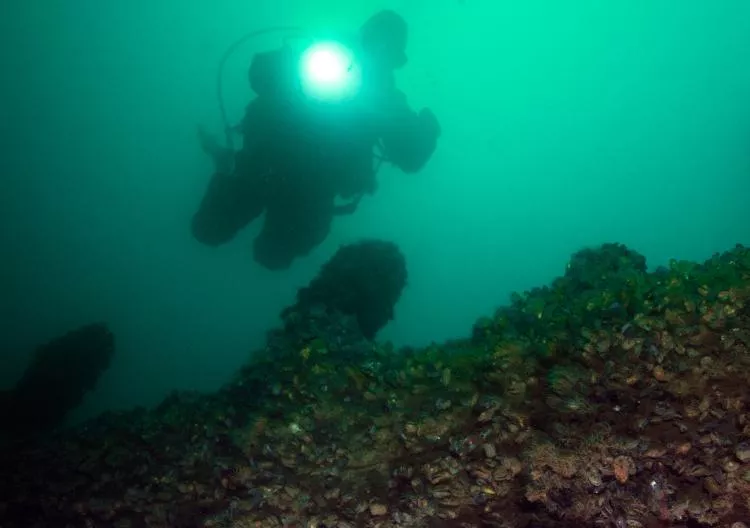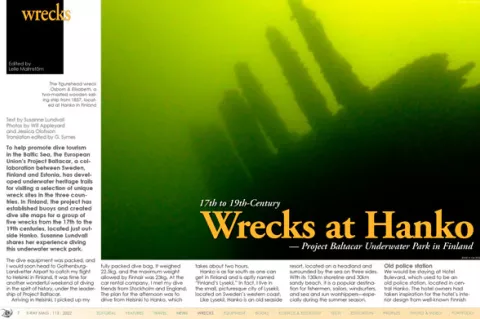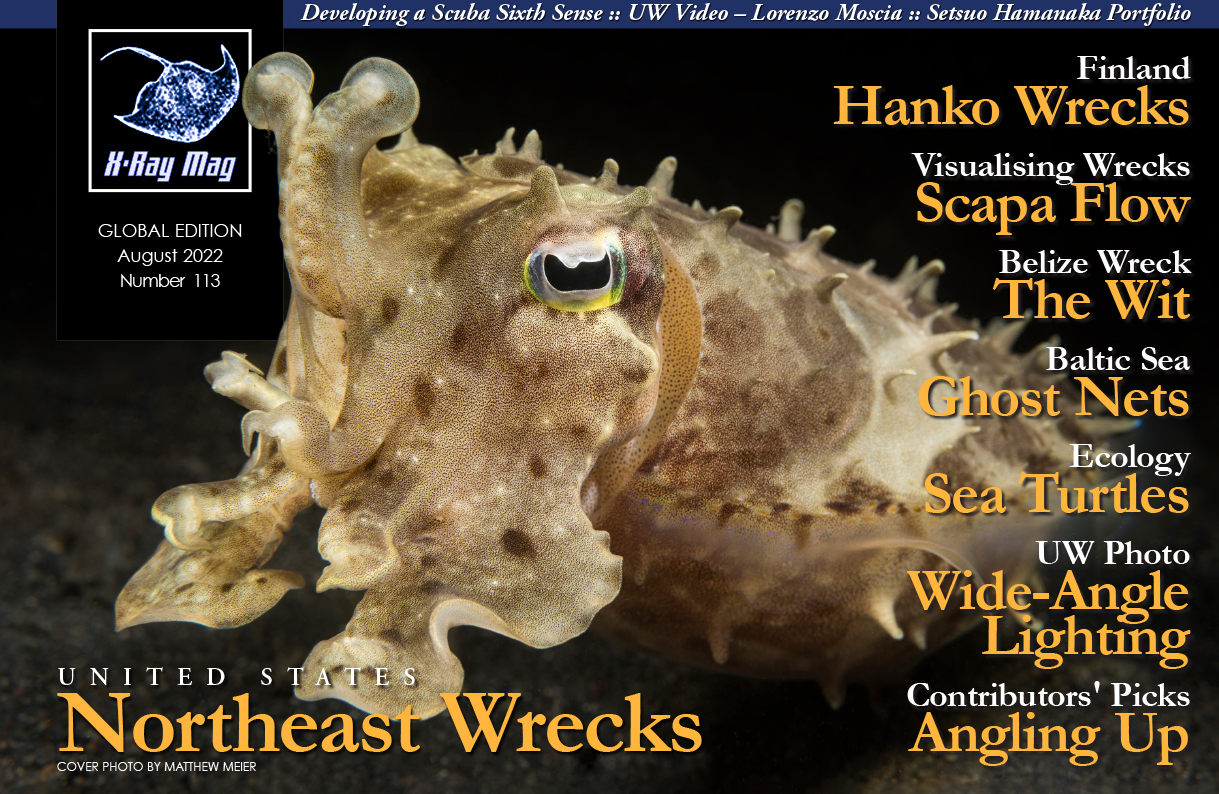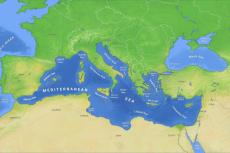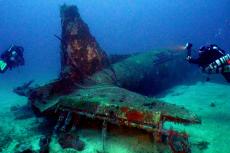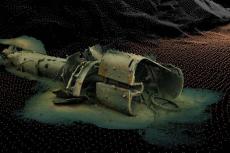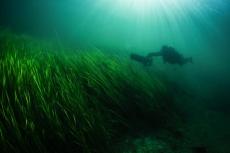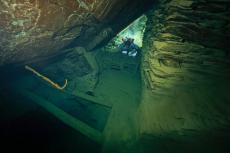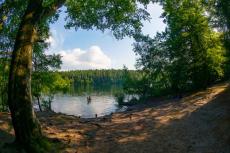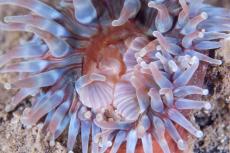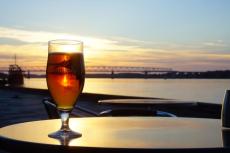To help promote dive tourism in the Baltic Sea, the European Union’s Project Baltacar, a collaboration between Sweden, Finland and Estonia, has developed underwater heritage trails for visiting a selection of unique wreck sites in the three countries. In Finland, the project has established buoys and created dive site maps for a group of five wrecks from the 17th to the 19th centuries, located just outside Hanko. Susanne Lundvall reports.
Contributed by
Factfile
PROJECT BALTACAR
"Project Baltacar: Baltic History Beneath the Surface" is an EU project that ran from 1 January 2017 to 31 December 2019. The project’s aim was to develop dive tourism and interest in the Baltic Sea’s underwater cultural heritage. This was done by developing and simplifying, in practical terms, the ways to visit the unique and well-preserved wrecks of the Baltic Sea.
WRECKS OF HANKO
The underwater park at Hanko has three buoys that mark a total of five different wrecks. The Cable Wreck, Ajan and Lilla Ankargrundet are located by the same buoy.
Osborn & Elisabeth is also called the “galleon figurehead wreck,” after the female figurehead on the galleon, which adorned the wreck. The galleon’s figurehead came loose in 2001 and was salvaged. It can be seen today at the Maritime History Museum in Kotka. Osborn & Elisabeth was a two-masted sailing ship built in England in 1857. It sank during a storm in 1873, when it was on its way from London to St Petersburg. The wreck is located at a depth of 10 to 18m, and measures 28m long and 7m wide.
Garpen is a two-masted brig. The wreck’s history is uncertain, but it is believed that the brig was English and that it was on its way from Glasgow to St Petersburg, loaded with barley. In October 1847, it sank off the island of Garpen—hence, the name of the wreck. The wreck is located at a depth of 9 to 14m, and measures 30m long and 11m wide.
Cable Wreck got its name after it was found with a large cable lying over it. Based on the porcelain found on the wreck, it has been dated to the 17th century, and it is believed that it has its origins in the Netherlands. It sank around 1647 to 1648 and is located off the island of Gäddtarmen (in Swedish) or Hauensuoli (in Finnish) in the Hanko archipelago. The wreck is located at a depth of 18m, and measures 18m long and 5m wide.
Ajan. There is still not much known about this wreck. The remains at the site are believed to have been part of a larger ship named Ajan. The wreckage is located at a depth of 15m.
Lilla Ankargrundet is named for the island where it is located. Beyond this, very little is known about the wreck, but it is believed that the remains at the site are parts from a larger ship. The wreckage is located at a depth of 11 to 15m.
DIVE OPERATOR
Aalto Diving School
sukelluskouluaalto.fi/en
The dive equipment was packed, and I would soon head to Gothenburg-Landvetter Airport to catch my flight to Helsinki in Finland. It was time for another wonderful weekend of diving in the spirit of history, under the leadership of Project Baltacar.
Arriving in Helsinki, I picked up my fully packed dive bag. It weighed 22.5kg, and the maximum weight allowed by Finnair was 23kg. At the car rental company, I met my dive friends from Stockholm and England. The plan for the afternoon was to drive from Helsinki to Hanko, which takes about two hours.
Hanko is as far south as one can get in Finland and is aptly named “Finland’s Lysekil.” In fact, I live in the small, picturesque city of Lysekil, located on Sweden’s western coast.
Like Lysekil, Hanko is an old seaside resort, located on a headland and surrounded by the sea on three sides. With its 130km shoreline and 30km sandy beach, it is a popular destination for fishermen, sailors, windsurfers, and sea and sun worshippers—especially during the summer season.
Old police station
We would be staying at Hotel Bulevard, which used to be an old police station, located in central Hanko. The hotel owners had taken inspiration for the hotel’s interior design from well-known Finnish designers, such as Tapio Wirkkala and Nanny Still. Even the old prison cells had been renovated into charming rooms.
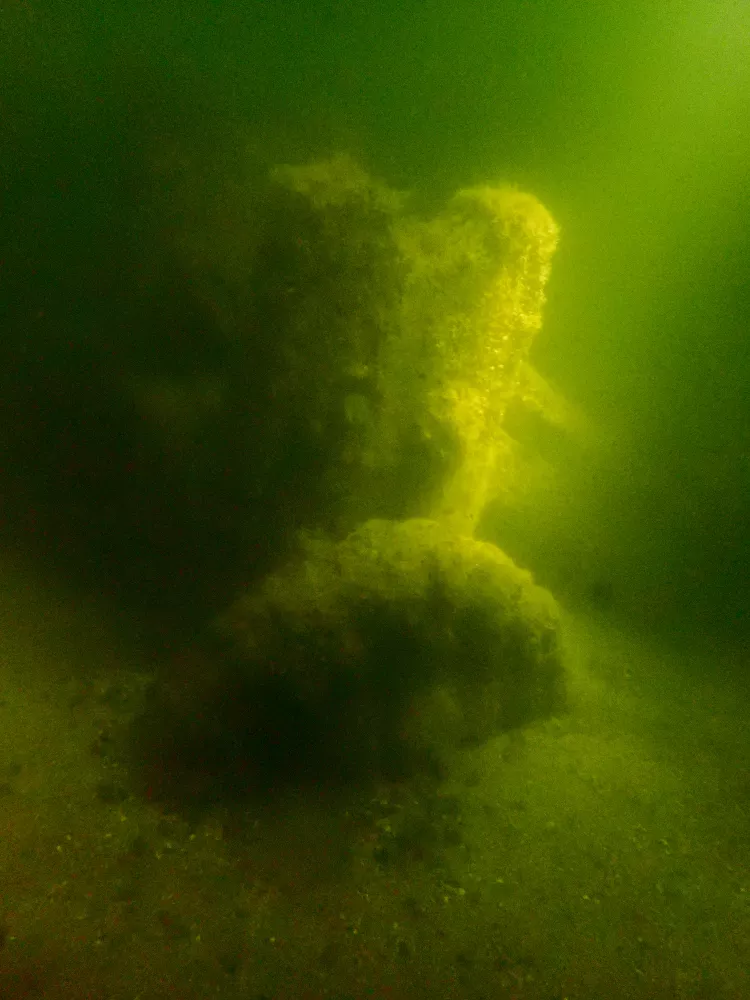
Canon Stages of Meijerfelt
After arriving at the hotel, Nina Pennanen, who was part of the Finnish team in Project Baltacar, met us there. We got ready to dive right away, because we were going to fly home on Sunday and could not dive on that day. Nina held a dive briefing on the day’s dive site—the Canon Stages of Meijerfelt.
Then, we loaded up the car with all our dive equipment and drove the few minutes to the port, where Hanko Diving’s dive boat Atlanta was ready and waiting. The dive boat was a repurposed Kulkuri fishing boat. It had plenty of space and was well adapted for diving. The dive site was relatively close, so we got ready on land and loaded up the dive boat with our equipment.
Once at the dive site, we put on our dive gear, did a buddy check and jumped into the green and relatively dark waters. It was May and water temperatures in the sea were between 6°C and 10°C.
We swam down a slope and saw some small fish, a fairly large flatfish and a wonderful pipefish, which posed and danced for us. We stayed quite a while to watch it.
The dive was so delightful, that I could not help but laugh a little—and of course, when one laughs underwater, one has to empty the mask afterwards. It happens to me all the time; it is so wonderful and relaxing to be under the surface, I just cannot help myself.
Marine archaeologist Hanna Halonen, who was my dive buddy, guided me to the wooden cannon stages, or racks, also known as gun carriages. [ed.—According to Halonen, all three sites within Project Baltacar at Hanko are wooden wrecks from the 17th to 19th centuries, in various states of preservation, and they are protected by the Antiquities Act in Finland. Old wooden remains are surprisingly intact underwater in this part of the world, due to the cold dark brackish waters, with low salinity and a lack of shipworm.]
This weekend, there were significantly more female divers and dive guides than male ones. In my experience, this was not that common.
There were nine cannon racks lying in a row on the sea bottom at a depth of 10m. There were some cannons next to the cannon racks, and we also saw a cannonball. It was overgrown and much larger than usual because it had corroded, but the clearly round shape still made it quite easy to distinguish.
Unfortunately, I had a leak in the right arm of my drysuit, and it was getting a little cold in the 6°C water, so after 35 minutes, we ended our dive. Back on the dive boat, I disassembled my dry glove system. When problems arise with dive equipment, I often find that they are due to handling errors. I had not put the silicone seal in properly, so it did not seal as it should. But now, it was solved. One learns things all the time!
Time flew by, so for dinner, there would just be a hamburger at the fast-food restaurant a few blocks away from the hotel, and then it was bedtime.

Osborn & Elisabeth
At 7:45 on Saturday morning, there was breakfast and a dive tour. The Project Baltacar had established buoys and made dive site maps for a total of five wrecks outside Hanko, in order to develop and facilitate dive tourism in the Baltic Sea. Nina showed us the map for the day’s first dive, which was the galleon figurehead wreck of the Osborn & Elisabeth, an English two-masted schooner made of oak. Nina also announced that bread rolls and snacks would be served on board the dive boat. Buns, this year? I love rolls, so I was super happy!
The wind was blowing, causing a choppy sea. I get seasick easily, so I took the precaution of taking a tablet for seasickness just in case. I prepared as much as I could while we were moored at the quay, assembling my dive gear, double-checking everything, and donning my undergarments and drysuit. It was quite hot, so I left the zipper open. My dry gloves and hood were set nicely in place next to me, and I felt ready for the first dive of the day. The archipelago was a bit reminiscent of Sweden’s western coast, with its rocky little islands.
The dive boat swayed with the swells on the way out to the dive site, so I sat down so that I could see the horizon and get fresh air. I noticed that I had forgotten to moisturise my face with sunscreen, so I would be red later, but I would rather get red in the face, than seasick. It was sometimes quite quiet on the dive boat; some were noticeably affected by the high seas.
After arriving at the dive site, my dive buddy, Will Appleyard, and I jumped in and sped down into the green sea. The galleon figurehead wreck was angled down toward the sea bottom as well as tilted horizontally. Once down on the wreck, I saw that my dive computer had condensation; it was impossible to see what it displayed. I signalled to Will to make him aware of the situation. We then swam around to look at the wreck. Will took some photographs, and we found the remains of the galleon’s figurehead. We had the wreck to ourselves for 20 minutes before the next dive pair joined us. It was magical to be down there in the peace and quiet. I had the thought and heard the song in my head:“I believe I can fly.”
This wreck from 1873 was quite well preserved. It stood upright and one could easily distinguish both the fore and aft and also look down into the cargo spaces. After 40 minutes, Will’s fingers started to freeze, and we had enjoyed enough of the dive to return to the surface.
Getting back on board the dive boat was clearly a challenge in the high seas. The dive ladder’s steps were quite sparse between the rungs, and my total height of 158cm did not make it at all easier. But with the help of dive friends, one can solve anything.
So, now it was time for rolls! I was so hungry! It turned out, however, that “rolls” in Finnish-Swedish are actually baguettes, so there were some good laughs… Even though they contained ham and cheese, the Finnish-Swedish rolls were very good after a wonderful dive.
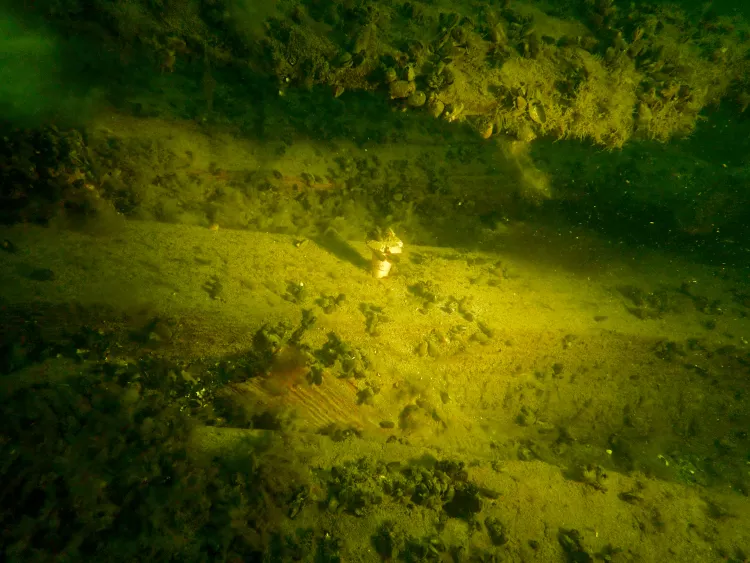
Garpen
My second and last dive of the weekend would be on the Garpen wreck. Garpen was a two-masted brig, which was believed to have originated from England, but this is still uncertain. It sank off the island of Garpen—hence, the name—in a storm in October 1847.
Before the dive, I had to solve my dilemma with the dive computer. My own spare parts bag contained extra valves, tools, dry gloves, inner gloves, silicone seals and a little more—but no extra dive computer. Fortunately, there were diver friends who had extra everything with them, so it was not a problem. Thank you, Jessica Olofsson, for the loan of a dive computer! Third time’s the charm, and on this dive, all my equipment functioned as it should.
Unfortunately, on this day, there was poor visibility and a large amount of backscatter on Garpen. I discovered that I saw better without the dive light on. The wreck was not so well preserved, and it was difficult to distinguish what was what, but there were a number of real copper nails that were original and fascinating to look at. The wreck was located in a bay, and along its edges at the bottom, there were several layers of different shades of whitish clay.
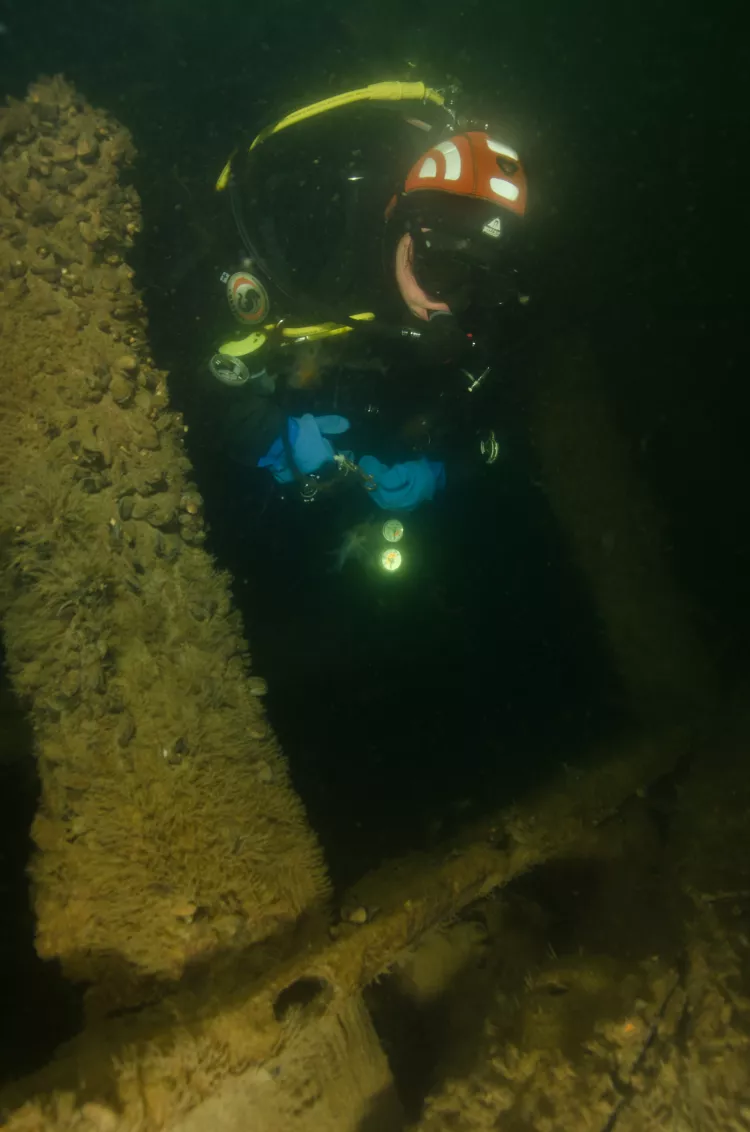
Post-diving activities
Back ashore, I decided to bring all my equipment to the hotel room, to make it easier to pack up for tomorrow’s flight. After spending time in the shower with the dive equipment, it was time for dinner with fellow divers.
We walked down to the quay to Skiffer Restaurant, which had just opened for the season. Fantastic oval sourdough pizzas were offered here, including innovative varieties with fresh strawberries, pears and goat cheese—but also the usual classics. As a rule, the restaurant did not allow one to add anything to their well-composed pizzas, but it was okay to remove some toppings. Nice concept! Satisfied and satiated, we went back to the hotel to bathe and wash off the day.
Sunday morning came, and for the Swedish gang, it was time to pack up the equipment and head to the airport. The Estonians on the trip came by ferry, so for their part, there were two more dives. We rounded off this pleasant weekend with a visit to the Finnish dive centre Aalto Sukelluskoulu, located in central Helsinki.
For diving, visit Aalto Sukelluskoulu at: sukelluskouluaalto.fi/en. To learn more about Project Baltacar, go to: projectbaltacar.eu.

